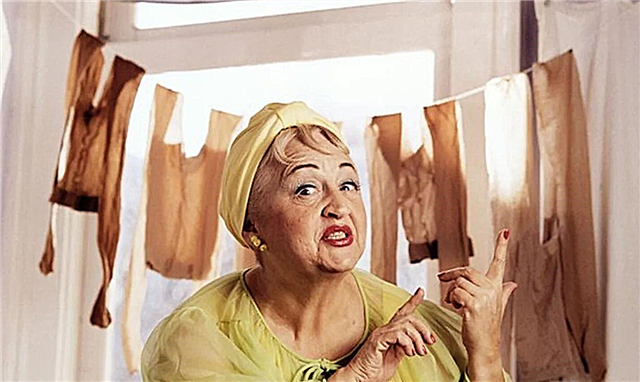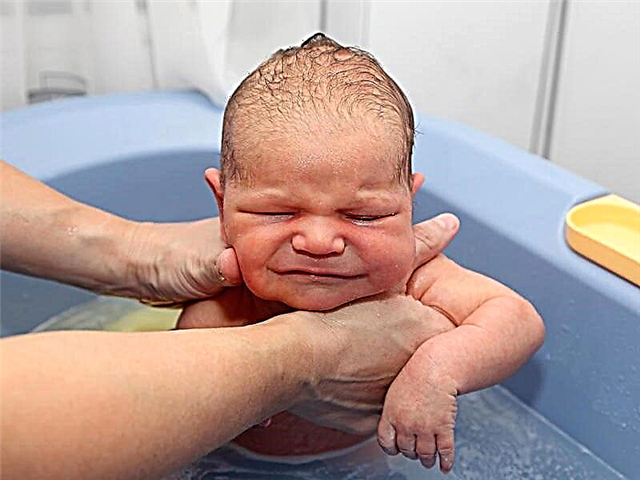
To assess the health of a newborn baby, unconditioned reflexes are of great importance. By their manifestation or absence, one can judge whether everything is in order with the baby and whether the baby needs additional examination and treatment. One of the important congenital reflexes of a newly born child and a growing baby is the Moro reflex.

What is it?
The Moro reflex is one of the unconditioned reflexes that appear immediately after birth (it can be seen when the obstetrician treats the baby). It was first described by the German pediatrician Moreau in 1918, after whom automatism is named. It is important to understand that this is not a pathological reflex, but an absolutely normal reaction of a healthy newborn.
You can learn more about the reflexes of a newborn in the following video.
How to trigger and evaluate a reflex
To invoke the Moro reflex, you can:
- Suddenly hit with both hands on the surface 15-20 centimeters from the head of the child lying on it (on both sides).
- Suddenly unbend the legs of the baby lying on the back or raise the unbent legs of the crumbs up together with the pelvis.
- Take the baby in your arms and sharply lower it in your arms by 20-30 cm down, and then return it to its original height.
- Clap your hands sharply next to the lying child.

The reaction to such techniques is divided into two phases:
- In the first phase, the baby moves his shoulders and arms to the sides, while opening his fists (fingers spread out).
- In the second phase, the handles of the crumbs return to the position in which they were before the impact (the baby seems to be hugging something or hugging someone).
How to assess the reflex and why a baby should be swaddled, see the next video.
Because of these manifestations, this reflex is also called the startle reflex. It often appears during sleep if the baby is frightened by any noise, for example, a pet or the sound of a car from an open window. It can also occur with sudden movements of an adult in whose arms the baby is. This does not harm the little one in any way, but it can cause prolonged crying.
It is important to note that the reflex manifests itself symmetrically on both sides, that is, the baby raises and spreads both arms equally. In healthy infants, the preservation of the Moro reflex is noted up to 3-5 months of age, after which it gradually fades away. In babies older than 5 months, only individual components of such a reflex are normally noted.

Check features
- The reflex is often checked in the morning, about 2 hours after feeding.
- The result is determined by the symmetry and severity of the reflex. It can be bright, normal, weak, or absent.
- The speed of manifestation is also assessed, according to which the reflex can appear quickly or be delayed.
- The check is carried out in dynamics.
- In assessing the result, it is important to take into account the health of the baby and the excitability of his nervous system, as well as whether the baby is full and whether he is tired.
Remember that during the check, the baby feels stress, since the baby becomes scared from the fall and he tries to save himself by grabbing the mother or the surface. Even if it seems to you that it looks very funny, you should not provoke the appearance of such a reflex on purpose, if it is not required for a medical examination of the baby.

To exclude the frequent appearance of a reflex, it is advised:
- Do not make sharp gestures next to the baby or when the baby is in your arms.
- Try to limit the noise level affecting the toddler.
- Talk to your baby in a gentle and calm voice.
Identifying problems with the Moro reflex
- The absence of a reflex immediately after childbirth or its decrease may indicate an intracranial injury.
- The asymmetric manifestation of the reflex is characteristic of hemiparesis.
- If the baby only slightly removes his hands, they speak of an incomplete reflex, which occurs with severe hypertension.
- Infants with CNS damage have an increased frequency of the Moro reflex, both with different manipulations and spontaneously.
- If the baby was exposed to hypoxia during childbirth, the reflex may be weakened or manifest later.

What to do if it is missing
Since this situation most often occurs due to damage to the brain or nerve pathways, it is important to immediately assess the condition of the newborn and conduct the necessary examinations in order to identify problems with the nervous system in time. As a rule, the absence of a reflex after birth is immediately noted by doctors and becomes the reason for a more thorough examination of the crumbs and checking other reflexes.
If the reflex manifests itself on only one side, then the doctor should examine the shoulder and collarbone of the newborn in order to exclude the situation of their damage during childbirth. If the mother found abnormalities in the manifestation of such a reflex after discharge from the hospital, she needs to tell the pediatrician about her doubts.
A medical examination is also indicated when the Moro reflex is preserved in children who are six months old. Sometimes the reason for this situation is increased muscle tone, which is the reason to prescribe a massage for the baby.




